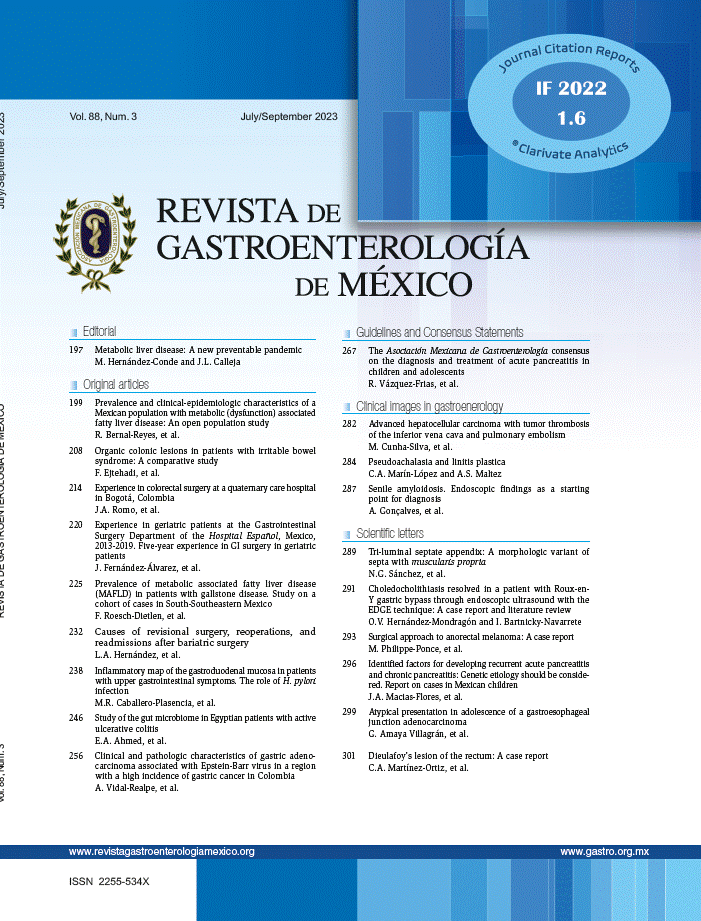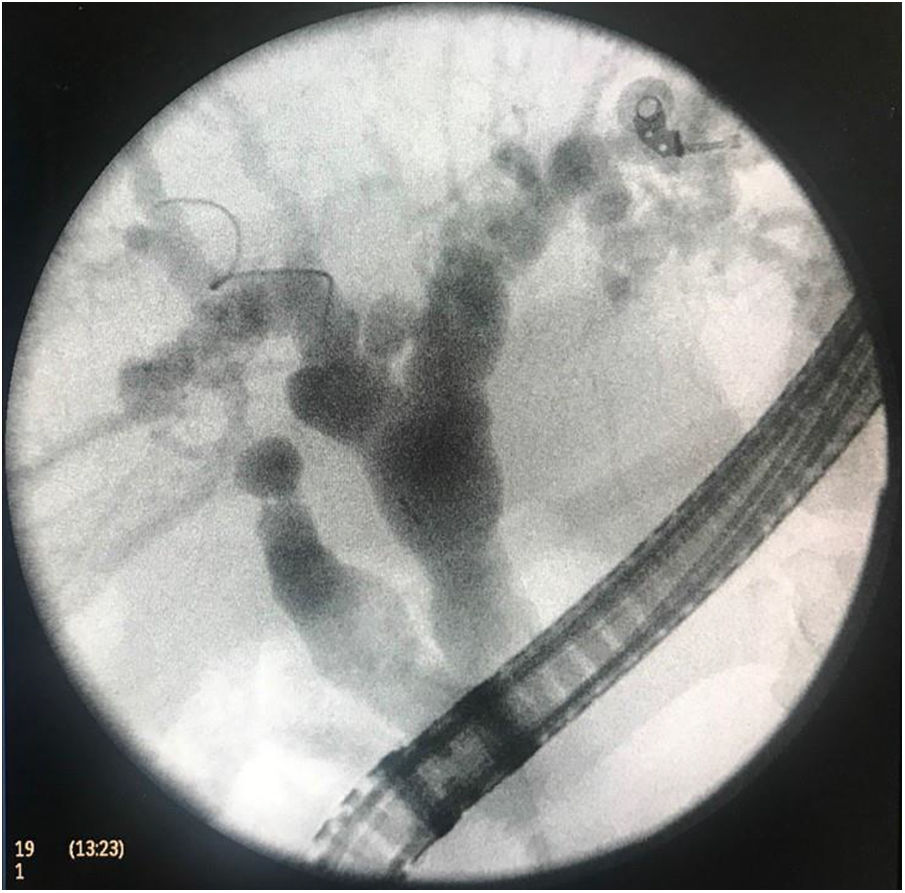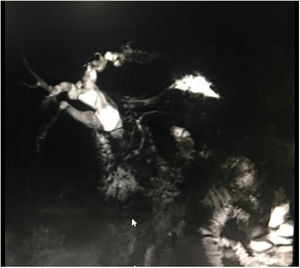A 39-year-old woman was referred to our hospital center for the diagnostic evaluation of asymptomatic cholestasis. Nuclear magnetic resonance cholangiography (fig. 1) and endoscopic retrograde cholangiopancreatography (ERCP) (figs. 2 and 3) were carried out. Both studies revealed marked cystic dilation of the extrahepatic and intrahepatic bile ducts and a normal intrapancreatic bile duct. The ERCP identified a common channel of the pancreatic duct and the common bile duct (fig. 2). The incidence of congenital choledochal cysts is 1/100,000 to 1/150,000, and the most widely accepted cause is an anomalous junction of the pancreatic duct and the common bile duct.
Please cite this article as: Soto-Solis R, Waller LA. Quiste de colédoco tipo IVa de Todani. Revista de Gastroenterología de México. 2019;84:400–401.









